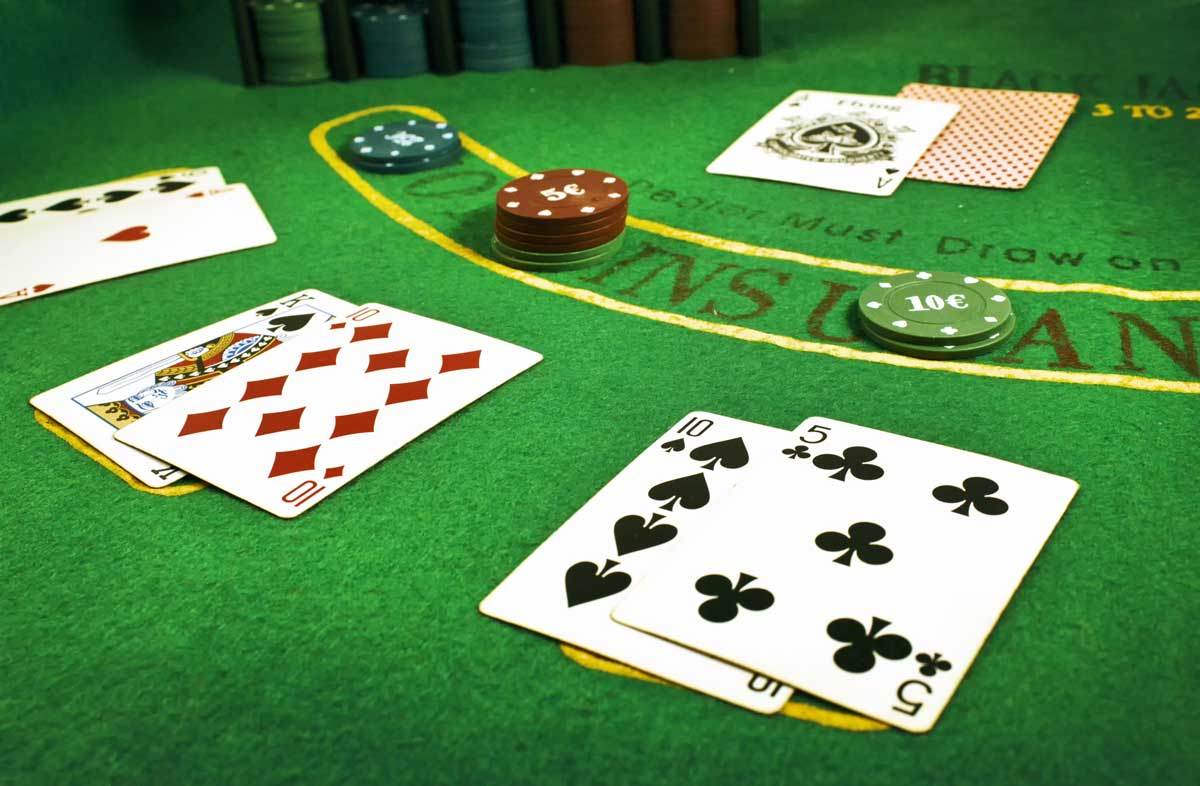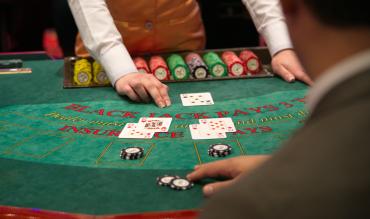Learning basic strategy at blackjack is one thing. Internalizing it so it becomes second nature can be quite another.
The problem is that some blackjack strategy plays seem to defy common sense regardless of whether you're playing online blackjack or in a live casino. As one player asked at a seminar I gave, "How can a play be so right when it feels so wrong?"
How can hitting hard 16 be the right play when there's such a large chance of busting? How can splitting 8s against a dealer's 10 be the right play when you could wind up with two 18s losing to a 20? How can doubling down on 11 when the dealer has a 10 face up be the right play when you can't hit if you draw a low card and the dealer could be sitting with 20?
It's enough to give you a queasy feeling even while you make the best play.
But they are the right plays. All casino games are grounded in math. Basic strategy takes into account all possible outcomes and calculates the play that, on average, yields the best chance to win.
That doesn't mean a basic strategy play will work every time. Losses are part of the game, and you'll lose some hands more than you win no matter what you do. When the dealer has a 10 up and you have a hard 16, you're going lose a majority of the time. But you'll lose a little less often when you hit than when you stand, so that's the play recommended by basic strategy.
When you double down on 11 and the dealer has a 10 up, there will be times you draw a low card and the dealer has that 20. But other times, you'll draw a winning card, or the dealer will have a low card face down. Sometimes you'll draw a 5 and be stuck with 16, but the dealer will bust. With all taken into account, the average outcome is that you'll make more money by risking the extra bet and doubling down.
RIGHT PLAYS BY THE NUMBERS
Let's take a close-up look at some plays that are right by blackjack basic strategy, but can feel wrong to the nervous player.
Numbers given are for the most common situation in modern casinos: six-deck games in which dealer's hit soft 17, double downs are permitted on any first two cards, including after splitting pairs, and players may split pairs up to three times but may split Aces only once.
Strategies can differ with fewer decks or other rules variations, including when surrender is offered.
Hitting hard 16 vs. dealer's 7 or higher
It's never a comfortable feeling when a one-card hit can lead to a bust. Starting with hard 16, eight of the 13 card denominations lead to an immediate bust, with 6, 7, 8, 9 or any of the four 10-value cards leaving you with 22 or more.
Nevertheless, 7 or higher is such a strong starting point for the dealer you're better off hitting than standing and hoping for a dealer bust.
Given 9-7 against a dealer's 7, you'll average a 48.1-cent loss per dollar wagered if you stand, but reduce that average loss to 40.8 cents if you take the risk and hit.
It's a lose-lose situation, but reducing losses and extending your play is a worthy goal.
Basic strategy tells us to hit hard 13 through 16 anytime the dealer shows a 7 or higher, and to hit hard 12 against a 2, 3 and 7 or higher.
Hitting hard 12 vs. dealer's 2 or 3
It can go against the grain to hit when you could bust in one card AND the dealer could bust with a 10 down followed by another 10. Many players can never bring themselves to do it.
Dealers bust only about 35 percent of hands that start with 2 and 37 percent that start with 3. They make 17 or better often enough that 12 vs. 2 or 3 loses more than it wins. You reduce losses by hitting.
With 10-2 vs. 2, your average loss is 28.9 cents per dollar if you stand, but 25.2 cents if you hit. With 10-2 vs. 3, it's a closer call at 24.9 cents if you stand and 23.2 if you hit. On either hand, the stronger play is to hit.

Splitting 8-8 vs. dealer's 10 or Ace
Ten-value cards and Aces put the dealer in very strong position. The dealer busts only 17 percent of hands when showing an Ace, and only 23 percent when showing a 10, Jack, Queen or King.
If you play 8-8 as 16, you're in an extremely weak position. Stand, and you're going to lose all the times the dealer makes a standing hand. Hit, and there's an 8-in-13 chance you'll bust.
Average losses vs. 10 are 53.7 cents per dollar if you stand and 53.5 if you hit. If the dealer starts with Ace, average losses are 59.5 cents if you stand and 53.9 if you hit.
If you split, you risk losing two bets instead of one. There will be times you make a second bet, draw a 10 on each 8 for two 18s, but the dealer beats you twice.
Overall, though, you improve your chances with the split. Eight is a stronger starting point than 16. Split the pair and play basic strategy from there, and average losses dip to 47.6 cents per dollar of your original bet if the dealer has a 10 value up and 51.4 vs. Ace.
The "of your original bet" part is important. Imagine your basic bet is $10 and you have 8-8 vs. 10. Your average loss when hitting is $5.35. If you split, you increase your risk to $20, but the average loss decreases to $4.76. You bet twice and much and sometimes lose twice and much, but the average total loss is less than if you stayed with one bet.
Standing on 10-10 vs. dealer's 6
It's only natural that when you have an edge, you want to take full advantage. Players learning the game reach for their pile of chips in live casinos or their electronic stack online and try to drive home and edge. They'll split so they get two hands starting with 10 against 6, a weak dealer up-card.
Getting the extra bet down feels right, and passing on the opportunity feels wrong.
But 20 is so much stronger a starting point that the best play is to stand. By standing on 10-10 vs. 6, your average profit is 67.7 cents per dollar wagered. Split, and that profit decreases to 50.1 cents per dollar of your original bet.
You're still in profit territory, but make the second bet to split decreases not only your percentage but your raw profit in dollars and cents.
Right as a split might feel, it's the wrong play.
Splitting 6-6 vs. dealer's 2
No wonder this hand gives players an uneasy feeling. It's a true borderline play. We've already seen that dealers bust only 35 percent of the time when starting with 2. Splitting 6s gives you two weak starting cards.
So why split?
The key is whether you're permitted to double down after splitting pairs. If you split and draw a 4 or 5 on one or both of the 6s, you want to be able to double with 10 or 11 vs. 2.
If double downs after splitting pairs is not allowed, it's better to play 6-6 as 12 and hit vs. 2. Under those rules, average losses per dollar of your original wager are 28.1 cents if you stand, 25.4 if you hit, and 26.7 if you split. Hitting is the best option.
But if doubles after splits are allowed, average losses per dollar of your original bet drop to 19 cents if you split. Starting two hands each with 6 isn't the most comfortable position, but if you can double after splits, splitting the pair is the way to go.
Hitting Ace-7 vs. dealer's 9. 10 or Ace
Until you get used to the play, hitting 18 can just feel wrong. But Ace-7 is a soft 18. You can't bust it with a one-card hit. When dealers start with 9, 10 or Ace, they're in strong position to beat your 18. So it's best to take a hit and try to improve the hand.
If you have Ace-7 and the dealer has 9 up, average losses per dollar are 18.3 cents if you stand and 9.8 cents if you hit. When the dealer has a 10, average losses are 18 cents if you stand and 14.3 if you hit, and if the dealer has Ace, you lose an average of 22.5 cents if you stand and 16 cents if you hit.
In each case, your average loss drops if you hit than if you stand on the soft 18.
It might feel wrong, but it's so right.


